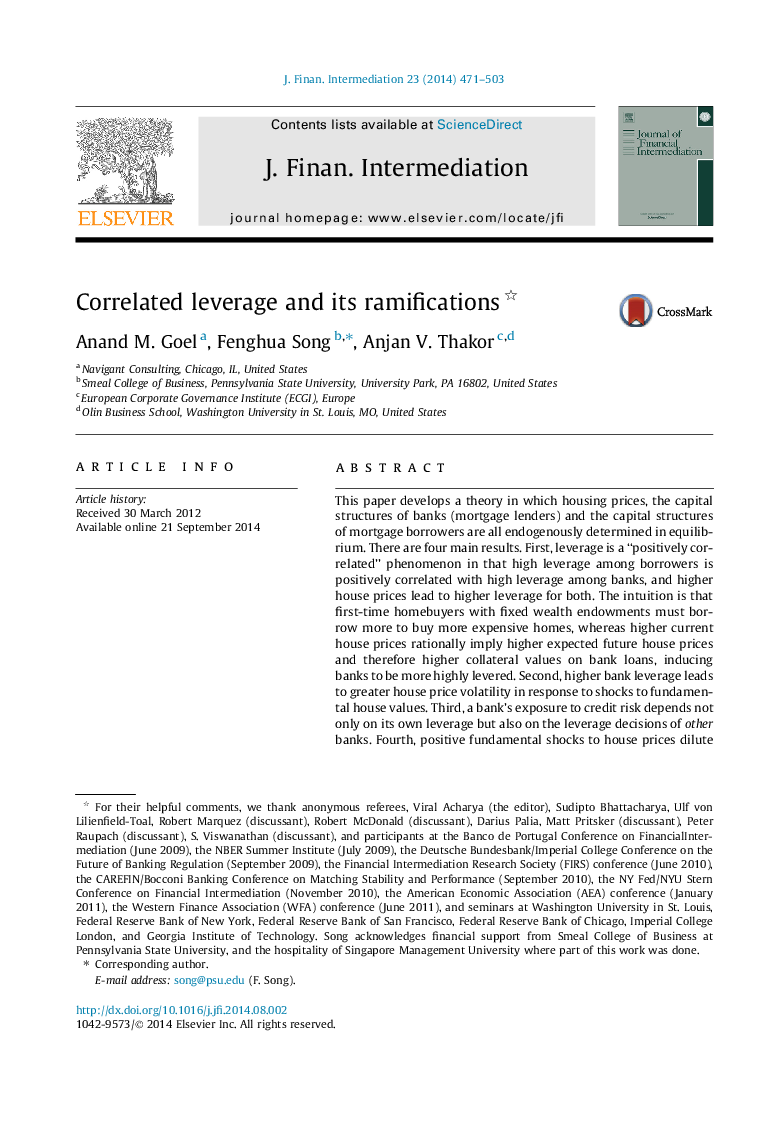| Article ID | Journal | Published Year | Pages | File Type |
|---|---|---|---|---|
| 960929 | Journal of Financial Intermediation | 2014 | 33 Pages |
Abstract
This paper develops a theory in which housing prices, the capital structures of banks (mortgage lenders) and the capital structures of mortgage borrowers are all endogenously determined in equilibrium. There are four main results. First, leverage is a “positively correlated” phenomenon in that high leverage among borrowers is positively correlated with high leverage among banks, and higher house prices lead to higher leverage for both. The intuition is that first-time homebuyers with fixed wealth endowments must borrow more to buy more expensive homes, whereas higher current house prices rationally imply higher expected future house prices and therefore higher collateral values on bank loans, inducing banks to be more highly levered. Second, higher bank leverage leads to greater house price volatility in response to shocks to fundamental house values. Third, a bank's exposure to credit risk depends not only on its own leverage but also on the leverage decisions of other banks. Fourth, positive fundamental shocks to house prices dilute financial intermediation by reducing banks' pre-lending screening, and this reduction in bank screening further increases house prices. Empirical and policy implications of the analysis are drawn out, and empirical evidence is provided for the first two main results. The key policy implications are that greater geographic diversification by banks, tying mortgage tax exemptions to the duration of home ownership, and increasing bank capital requirements when borrower leverage is high can help reduce house price volatility.
Related Topics
Social Sciences and Humanities
Business, Management and Accounting
Strategy and Management
Authors
Anand M. Goel, Fenghua Song, Anjan V. Thakor,
